How to display the toolbar in the browser
You can also enable the toolbar for viewing on web browsers . As? Nothing simpler! Find everything you need to know in the following chapters. How to display the toolbar in the browser
Display the toolbar in Edge
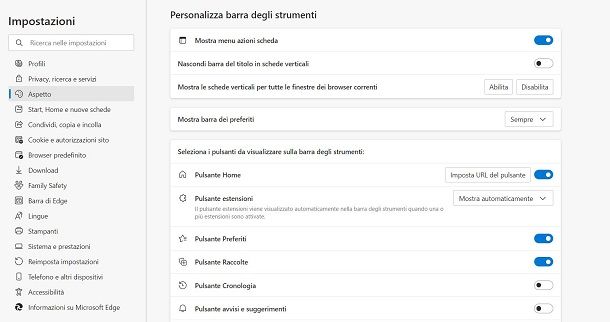
Do you use Edge on Windows? Even in the Microsoft web browser you can view the toolbar. In reality this bar is already active by default but many of its features could be “hidden” and it is for this reason that you have to act in the browser settings to activate them.
To do this, press the icon (…) at the top right and select the Settings item . Now, click on the Appearance item in the sidebar and locate the Customize Toolbar section in the central area of the tab. What you now need to do is enable (by moving to ON ) all the levers relating to the features you want to show in the Edge toolbar (the Home button , the history button or the download button ).
In case you need to keep the favorites bar in the foreground as well, click on the Always item from the drop-down menu next to the word Show favorites bar . If you also want to activate the vertical bar that collects some Edge features, click on the Edge Bar tab from the side menu and click on the icon next to the word Open Edge Bar .
Display the toolbar in Google Chrome
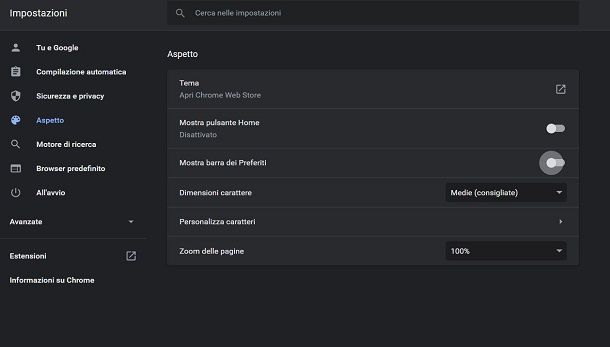
On Google Chrome it is not possible to display the toolbar , blocking its display permanently, in the same way as it happens in other browsers. In fact, Chrome breaks away from the traditional view of the toolbar by combining all its features in the icon with the symbol [⋮] , located at the top right.
However, it is possible to make customizations to the horizontal bar, which you see in the upper section of this browser. To do this, click on the icon with the [⋮] symbol and choose the Settings item from the menu that appears. In the newly opened tab, click on the Appearance item in the sidebar and change the parameters you see on the screen.
For example, if you want to show the Home button , just move the lever from OFF to ON in correspondence with the Show Home button item . You can also decide to keep the Favorites bar locked under the address bar: in this case, under Show Favorites bar, move the lever from OFF to ON . Regarding the latter feature, you can enable the Favorites Bar also using the keyboard shortcut Ctrl + Shift + B on Windows or shift + cmd + b on Mac .
If you want to find out a lot of information on how to best use Google Chrome , I suggest you open this link , where you can view my guides relating to this browser.
Display the toolbar in Firefox
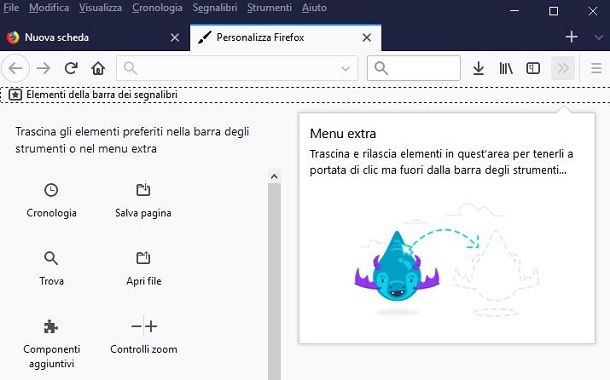
On Firefox , the toolbar is made up of several elements, some of which are hidden by default. For example, their display has been disabled for the Menu bar and the Bookmarks bar , as well as many other buttons that refer to useful functions for navigation. If you want to know how Firefox works , you can read this guide or view the archive with all the guides I wrote on this browser.
If you want to view the toolbar in Firefox , I recommend that you first start this browser and then press the Alt key on your keyboard, so as to see the Firefox menu bar . Then click on the item View , from the bar at the top, and choose the item Toolbars , from the context menu. If you click on the Menu Bar and Always Show items (within the Bookmarks Bar item ), they will be shown to you on each navigation tab.
You can also customize the toolbar by right-clicking on any item in the top bar. At this point, from the context menu, choose the Customize toolbar item to open the Customize Firefox panel . Drag the buttons, which correspond to the Firefox features you need, within the toolbar, to a position of your choice. Then press the Done button at the bottom to complete.
View the toolbar in Internet Explorer
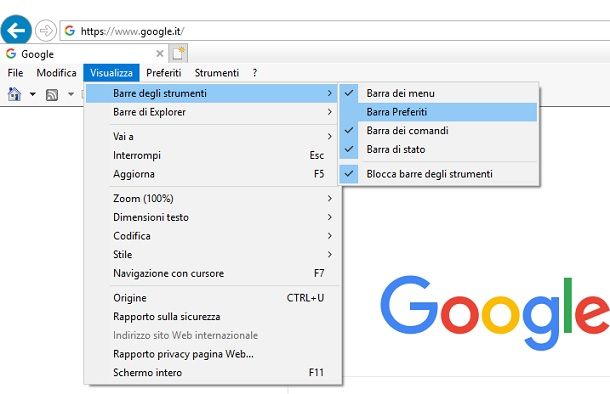
If you are using the old default Windows browser, Internet Explorer , you can bring up the toolbar in a few simple steps. The first thing you need to do is open the latter and press the Alt key on your keyboard. Now, click on the items View> Toolbars and activate those of your interest.
You can choose from the four bars: Menu Bar , Favorites Bar , Command Bar and Status Bar . Alternatively, you can enable Internet Explorer sidebars , which show Favorites ( Ctrl + Shift + I ), History ( Ctrl + Shift + H ), and Feeds ( Ctrl + Shift + G ). In this case, from the top menu bar, click on View> Explorer Bars and select the one you need to view.
Do you want to know the guides I made about the old native Windows browser? I suggest you read the tutorials I wrote on Internet Explorer , which can be reached at this link .
How to display the toolbar in Photoshop
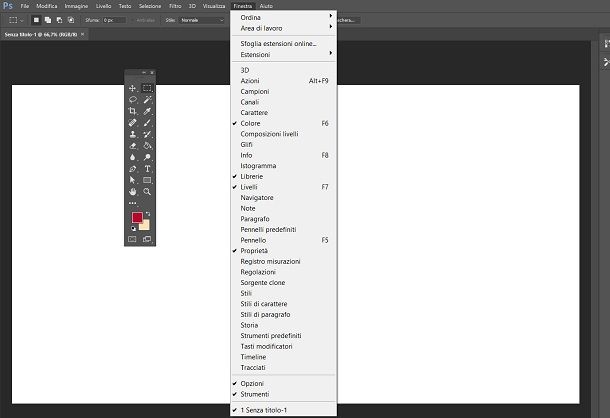
It may happen that using Photoshop you may accidentally close the toolbar. In this case, being able to view again is not a problem at all, in fact it is child’s play!
To show the toolbar in Photoshop, what you need to do is locate the menu bar at the top and click on the Window entry . Now, from the box on the screen, all you have to do is press on the Tools item , so as to put a check mark and display the instrument panel of this software.
Keeping the click on the newly opened bar, you can drag it wherever you want. By moving it to one of the side margins you can instead anchor it and put it, therefore, in its default position.
How to display the toolbar on Illustrator
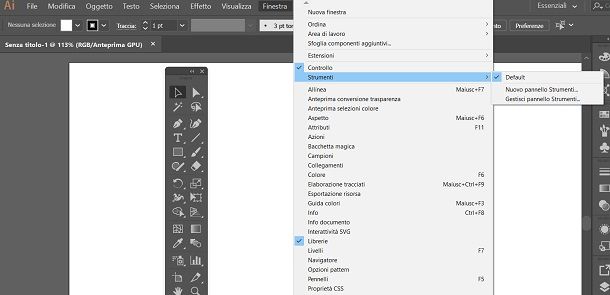
Then same way as I showed you for Photoshop , you can view the toolbar on Illustrator that you previously closed by mistake.
Therefore, start Illustrator and, via the menu bar at the top, press on the Window item . In the on-screen pane, click on Tools> Defaults to display the toolbar of this Adobe software. At this point, drag the bar to the area you prefer and, by moving it to the side margins, you can anchor it.



